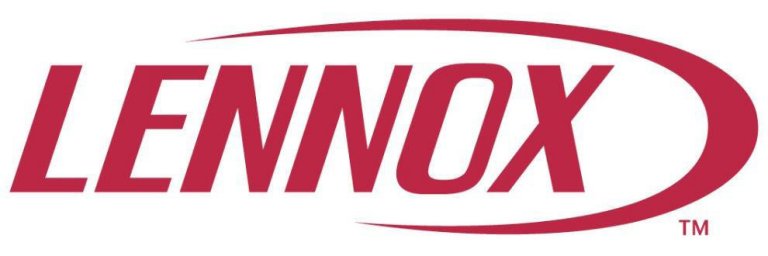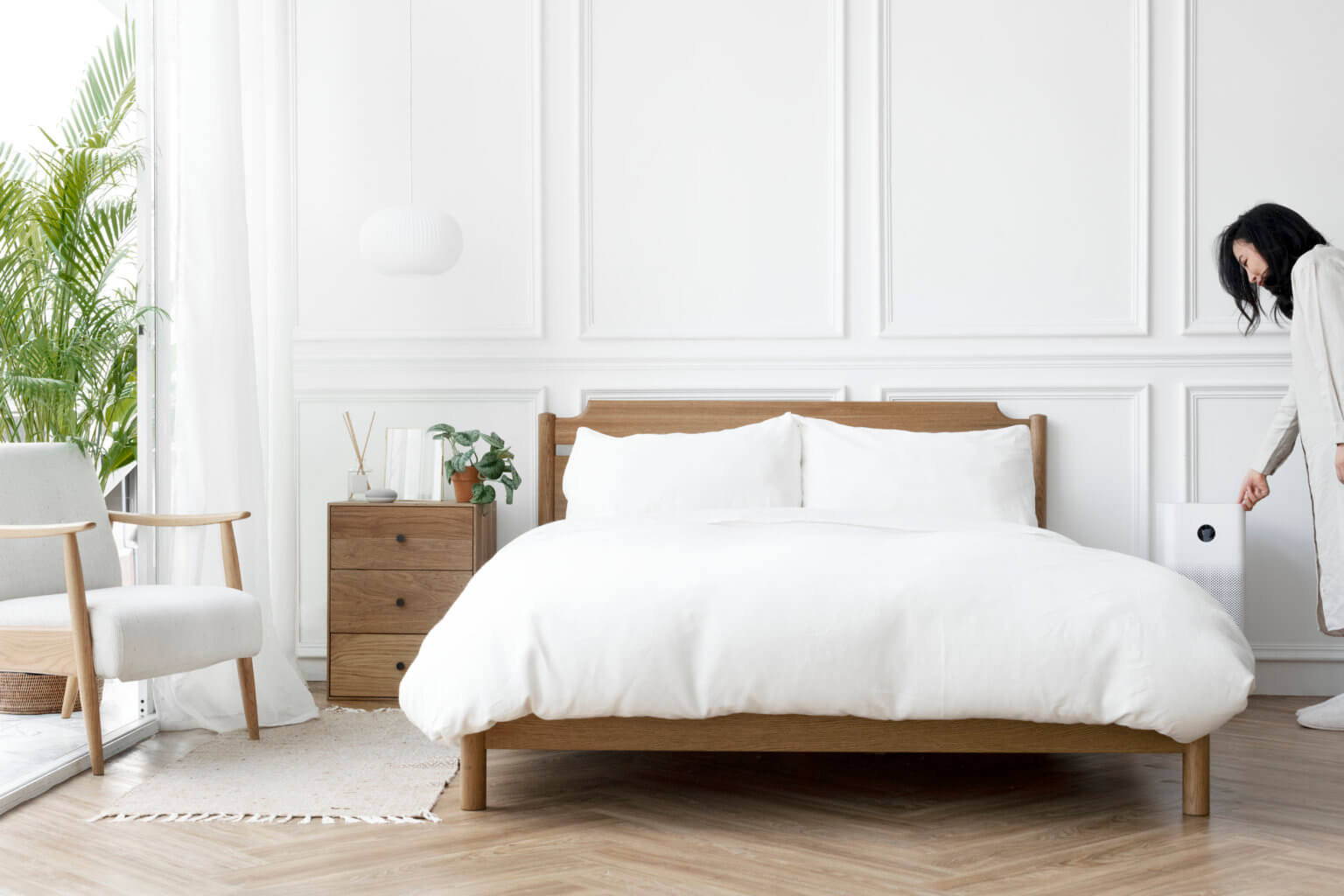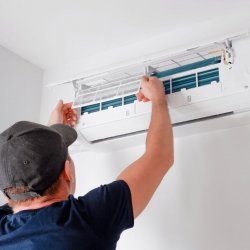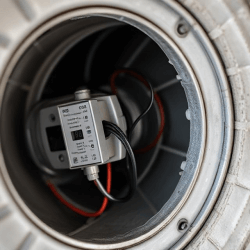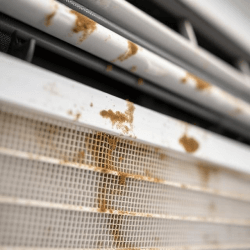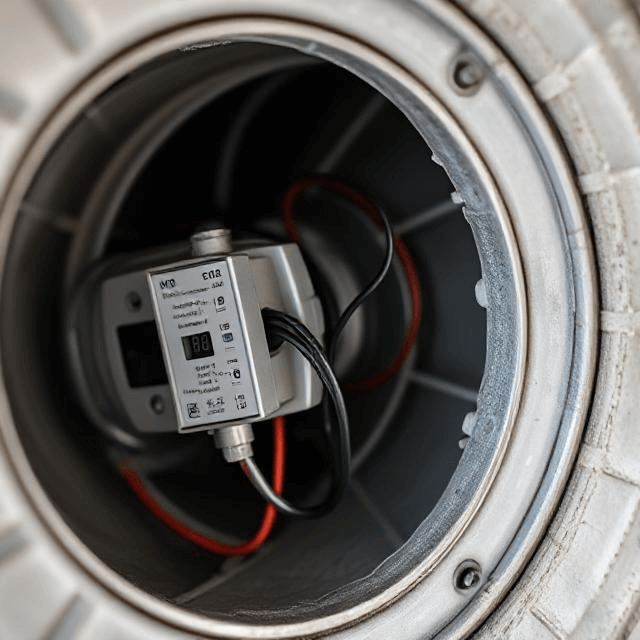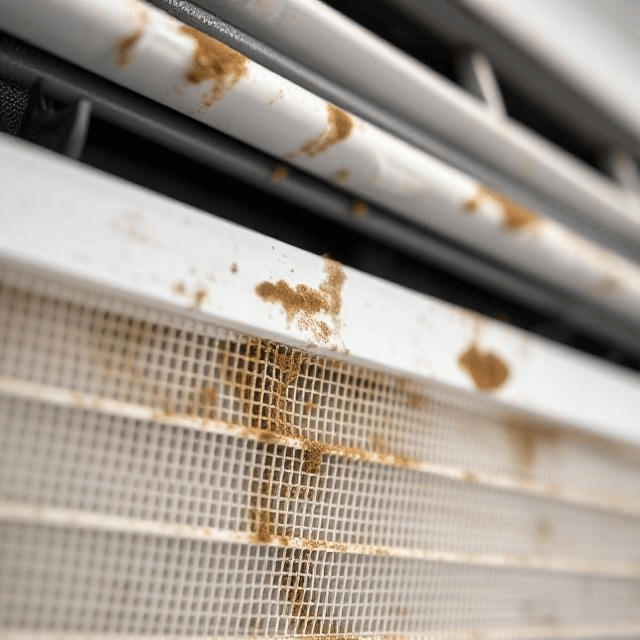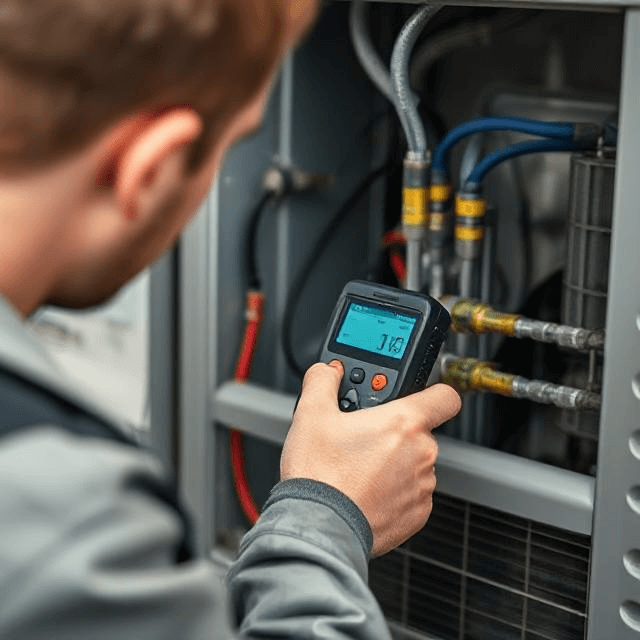UV air purifiers are a modern solution to indoor air quality issues. They use ultraviolet light to eliminate airborne pathogens from the environment. Effective against bacteria, viruses, mold, and allergens, air purifiers add protection without intruding on daily life.
In this guide, let’s discuss their benefits, how they work, and what to consider before getting one.
How UV Air Purifiers Work
UV air purifiers use ultraviolet (UV) light to kill or inactivate airborne pathogens and microorganisms.
When air passes through the system, it is exposed to UV lamps. This exposure to UV light disrupts the DNA or RNA of bacteria, viruses, mold spores, and allergens, leaving them harmless and unable to reproduce.
This process cleans these contaminants’ air before recirculating them back into the room.
Benefits of UV Air Purifiers
Improved Air Quality
UV air purifiers improve indoor air quality by eliminating contaminants like bacteria, viruses, mold spores, and allergens.
This is ideal for individuals with allergies, asthma, or other respiratory conditions.
Reduction in Illness Transmission
Neutralizing harmful microorganisms and pollutants lowers the risk of disease transmission in the home or workplace. This is especially helpful during flu season or in areas prone to outbreaks of airborne diseases.
Low Maintenance
Traditional air purifiers rely on physical filters, which require regular maintenance.
However, the upkeep of UV air purifiers is very straightforward. The only maintenance is replacing the UV light source, which typically lasts longer than standard filters.
Quiet Operation
UV air purifiers operate with minimal noise, making them an unobtrusive addition to any space.
This silent operation allows the use of air purifiers continuously without disrupting daily activities or sleep.
No Byproduct Emission
These cleaners do not emit ozone or other harmful byproducts, which can be a concern with some types of air purification systems.
This makes UV air purifiers a safer choice for indoor air cleaning, particularly for those with health sensitivities.
Versatility
UV air purifiers can be used in various settings, including homes, offices, healthcare facilities, and schools. They are a flexible solution to air quality issues in these environments.
Energy Efficiency
Many models of UV air purifiers are energy efficient and generate low electricity bills despite continuous operations. However, this efficiency does not compromise their effectiveness in purifying the air.
Considerations When Using UV Air Purifiers
Consider the following factors before investing in a UV air purifier.
- Coverage Area: UV air purifiers can cover specific area sizes. Ensure the selected model can purify the air in the room or space where you plan to use it. An undersized unit may not effectively clean the air in larger spaces.
- Placement: You must place the UV air purifier where air circulation is optimal. This will allow the purifier to process air more efficiently throughout the room.
- UV Lamp Lifespan: The UV lamps have a limited lifespan and will need regular replacement. It’s important to consider the availability and cost of replacement lamps.
- Type of UV Light: There are different types of UV light (such as UVA, UVB, and UVC), with UVC being most effective at killing or inactivating microorganisms. Ensure the purifier you select uses the appropriate type of UV light for air purification.
- Safety Features: UV light is harmful to humans and pets. Look for purifiers with built-in safety features to prevent exposure to UV light, such as enclosed UV lamps or automatic shut-off mechanisms when the unit is open or improperly positioned.
- Effectiveness Against Odors and Gases: While excellent at addressing microorganisms, some UV air purifiers may not be as effective against odors or volatile organic compounds (VOCs). If removing odors or chemicals is a priority, consider a purifier that combines UV technology with activated carbon filters and other filtration methods.
- Cost and Operating Expenses: Initial cost, energy consumption, and the cost of replacement lamps are important financial considerations. While UV air purifiers may be energy-efficient and have low ongoing maintenance costs, the initial purchase price and the eventual need for lamp replacement should fit your budget.
How to Choose the Right Air Filter for My Space?
Choosing the right air purifier for your space involves considering several factors to ensure it meets your specific air quality needs, fits within your space, and operates efficiently. Here’s a guide to help you select the most suitable air purifier:
Identify Your Needs
- Allergen Removal: If you suffer from allergies, look for purifiers with HEPA filters designed to capture dust, pollen, and pet dander.
- Asthma or Chemical Sensitivities: If you have asthma or are sensitive to chemicals, consider an air purifier with both a HEPA filter and activated carbon to remove fine particles and odors/VOCs.
- General Air Quality Improvement: For general air quality concerns, including bacteria and virus removal, a combination of HEPA and UV air purification might be the best option.
Consider Room Size
Air purifiers are rated for the maximum size of room they can effectively clean. Before choosing one, measure the room where you plan to use the air purifier to determine its square footage.
This measurement will help you choose a purifier with the appropriate coverage area.
Look at the Air Purifier CADR Rating
The Clean Air Delivery Rate (CADR) is the volume of clean air an air purifier produces at its highest speed setting. Higher CADR numbers indicate a more efficient air purifier. Choose one with a CADR rating that matches or exceeds the room size in cubic feet.
Decide on the Type of Filters
- HEPA Filters: Capture 99.97% of particles as small as 0.3 microns, including pollen, dust, and smoke.
- Activated Carbon Filters: Absorb odors, smoke, and VOCs but don’t remove dust or allergens.
- UV Light: Kills bacteria and viruses but does not remove particles.
- Ionic Filters: Emit ions to attract particles, effective for removing fine particles but may produce ozone.
Features and Ease of Use
Additional features like filter change indicators, adjustable fan speeds, timers, and smart technology can enhance the user experience. Consider which features are most important to you.
Maintenance and Operating Costs
Check the cost and lifespan of replacement filters and any other maintenance requirements. UV light bulbs, for instance, also need periodic replacement. These ongoing costs can impact the overall expense of operating the air purifier.
Safety and Certifications
Ensure the air purifier is certified by reputable organizations like the Association of Home Appliance Manufacturers (AHAM) and does not emit harmful levels of ozone (look for California Air Resources Board (CARB) certification).
Can I Integrate a UV Air Purifier in My Existing HVAC System?
Integrating a UV air purifier into your existing HVAC system can enhance the air quality throughout your home or building. This approach allows the UV purification process to work with your HVAC’s airflow, targeting airborne pathogens as air circulates.
Here’s how to connect a UV air purifier to your existing HVAC system:
- Select a Compatible Model: Choose a UV air purifier designed for HVAC integration to match your system’s capacity and airflow requirements.
- Installation Location: Install the UV purifier strategically within the HVAC system, such as the return air ducts or near the air handler.
- Professional Installation: Due to the complexity of HVAC systems, opt for professional installation to ensure correct setup and avoid potential system damage.
- Maintenance Plan: Establish a maintenance schedule for replacing the UV lamps and inspecting the system to maintain optimal performance and air quality.
- Safety and Compatibility: Ensure that the installation is completed safely to prevent UV light exposure to occupants and confirm that your HVAC system is suitable for such integration with the help of a professional.
Taking the Next Step Towards Cleaner Air with Season Control
Incorporating a UV air purifier into your environment can improve indoor air quality and offer a healthy living space.
Professional guidance is key to ensuring seamless integration and optimal performance, especially when considering your existing HVAC system.
For assistance, contact Season Control at (818) 452-5406. Let’s take the first step towards cleaner, purer air today.
